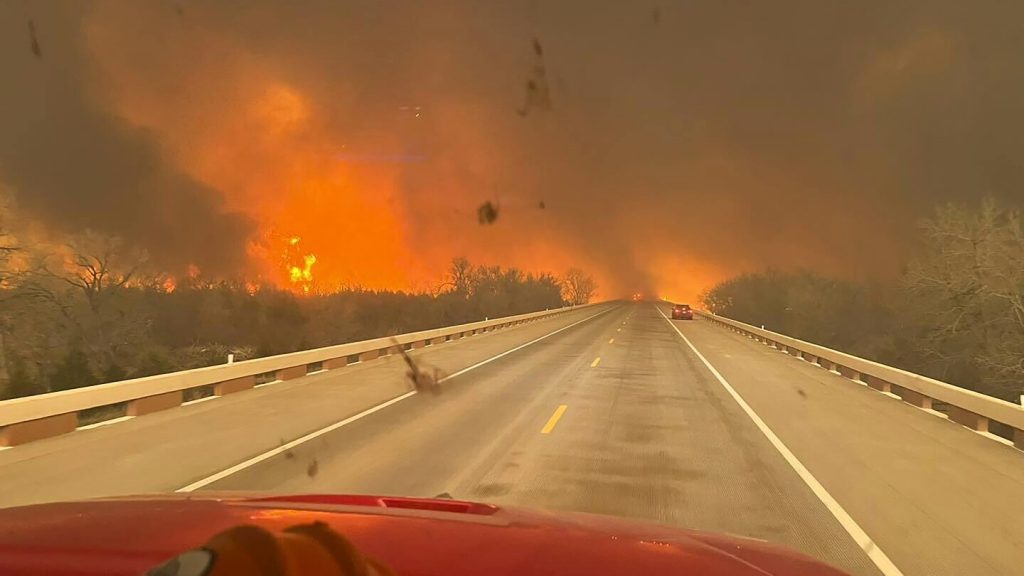Texas lawmakers are considering establishing a state-owned firefighting aircraft division after a series of devastating wildfires in the state, including the largest in history. The fires have caused significant damage, with at least two deaths and over 1 million acres burned in the Panhandle region. The Chief of the Texas Division of Emergency Management, Nim Kidd, emphasized the need for the state to have more control over its firefighting capabilities to prevent future catastrophes. Local landowners, however, expressed doubts about the state’s ability to effectively handle such disasters.
In a meeting held in Pampa, Texas, Republican Rep. Ken King stressed the importance of preventing such wildfires from happening again, stating that the impacts are not limited to the Panhandle region but have statewide effects. The panel of lawmakers investigating the wildfires will focus on factors that contributed to the fires, the allocation of response resources, and the effectiveness of wildfire disaster preparedness. They plan to publish a report on their findings by May 1, examining the coordination between local, state, and federal government agencies in prevention and response efforts.
Ranchers and residents affected by the wildfires expressed frustration over the delayed response from firefighting aircraft, as the historic Smokehouse Creek fire ravaged their land. The fire, started by power lines, resulted in the loss of lives, homes, and livestock, leaving a devastating impact on communities. Without a dedicated fleet of firefighting aircraft, Texas relies on contractors, leading to delays in response during emergency situations. Chief Kidd proposed building a state-owned firefighting air force with at least six aircraft, costing around $50 million, to enhance firefighting capabilities.
However, there are concerns about the effectiveness and reputation of a state-owned firefighting air force, with some landowners and first responders criticizing the state’s response to the wildfires. Issues such as lack of communication between volunteer fire departments and state agencies were raised, highlighting the challenges in coordinating efforts to combat wildfires. The need for a standardized communication system statewide was emphasized to improve response mechanisms. Despite the challenges, efforts are being made to address the deficiencies in firefighting capabilities in Texas.
The discussion around establishing a state-owned firefighting air force is ongoing, with stakeholders weighing the benefits and challenges of such an initiative. While there is recognition of the need for improved firefighting capabilities in the state, there are differing opinions on the best approach to achieve that goal. As the investigation into the wildfires continues, the focus remains on enhancing preparedness, coordination, and communication to effectively respond to future wildfire incidents. The outcome of this inquiry and the subsequent actions taken by lawmakers will have a significant impact on the state’s ability to handle emergencies and protect communities from devastating fires.
Overall, the wildfires in Texas have highlighted the importance of investing in firefighting resources and enhancing preparedness to mitigate the impact of such disasters. The proposal for a state-owned firefighting aircraft division is a step towards improving the state’s ability to respond to wildfires effectively. By addressing challenges such as communication gaps and resource allocation, Texas aims to strengthen its firefighting capabilities and ensure the safety of its residents in the face of future emergencies.


